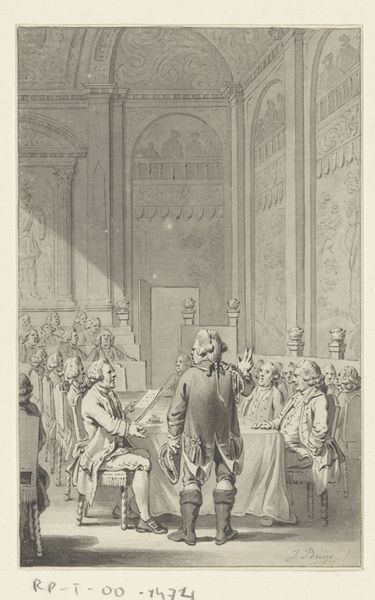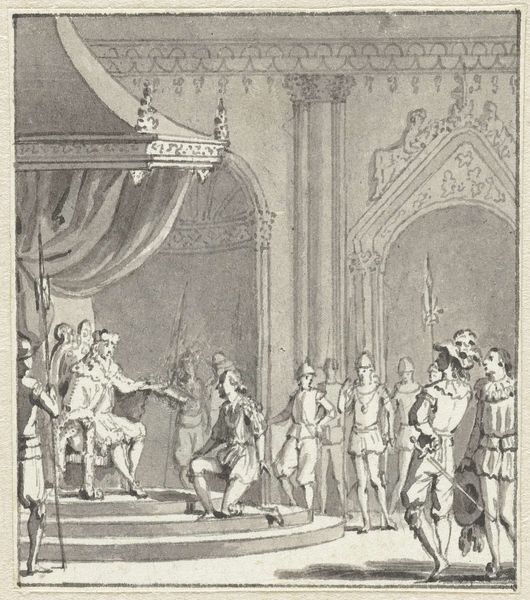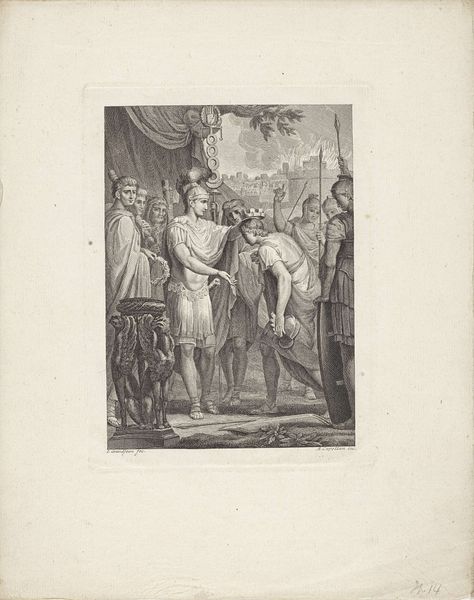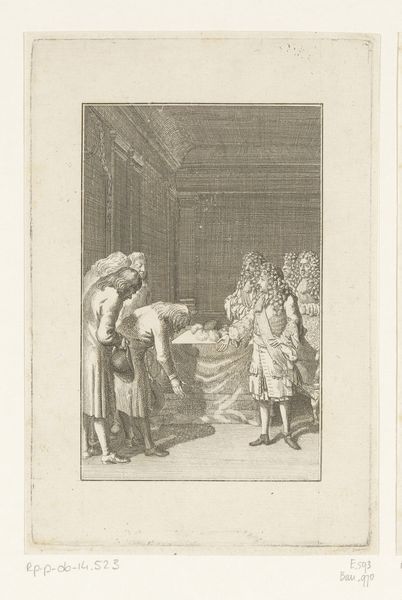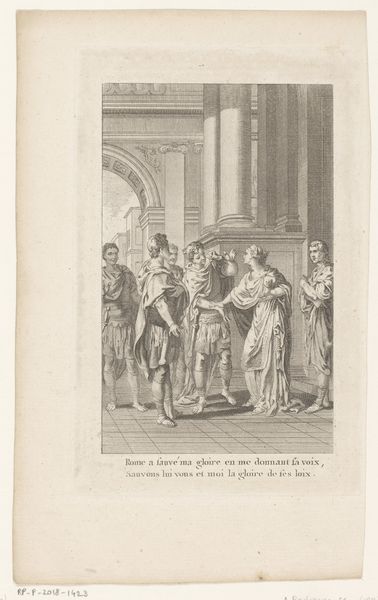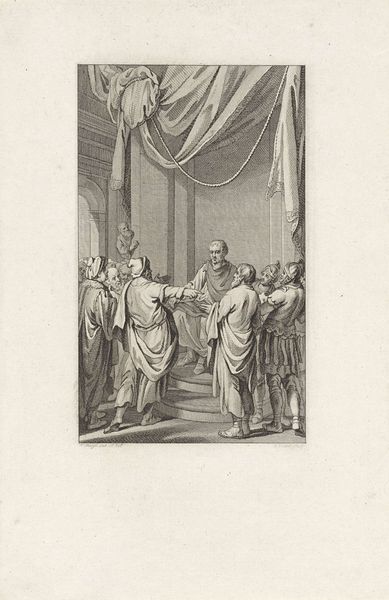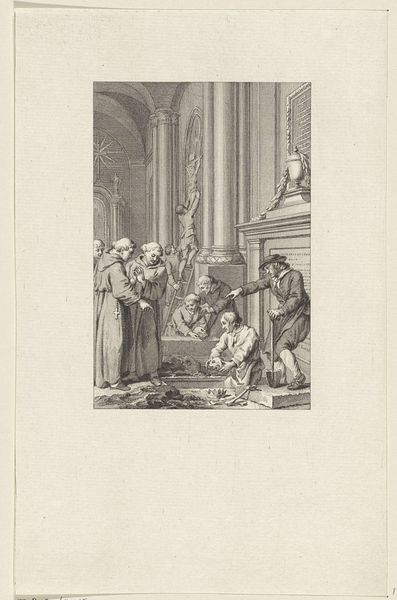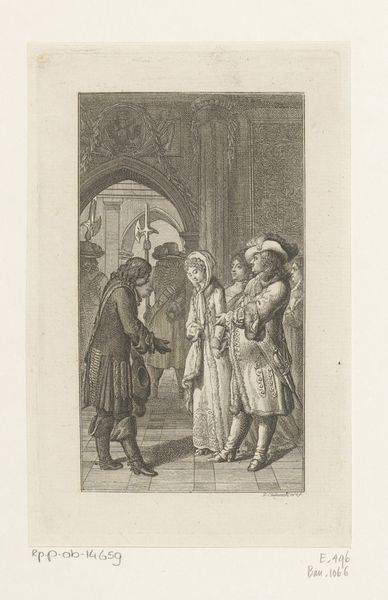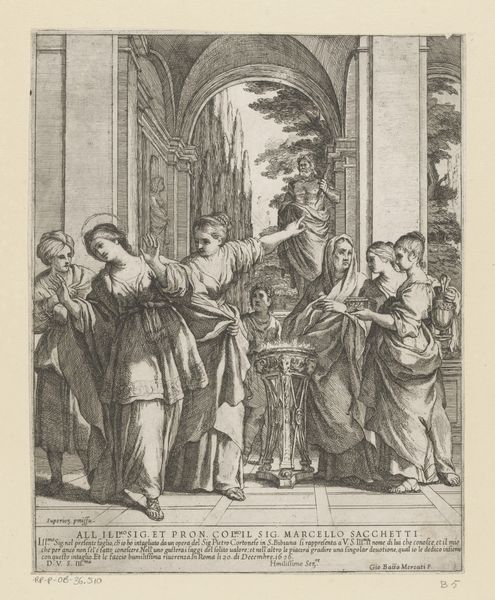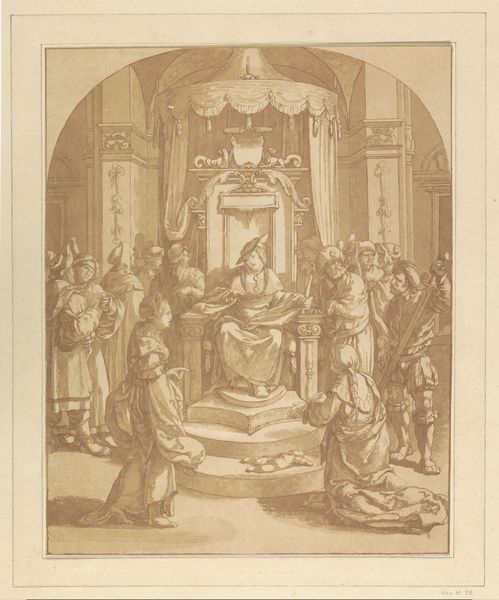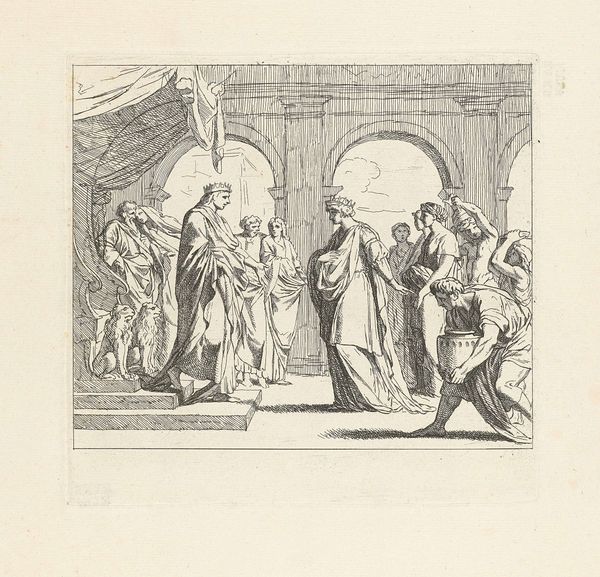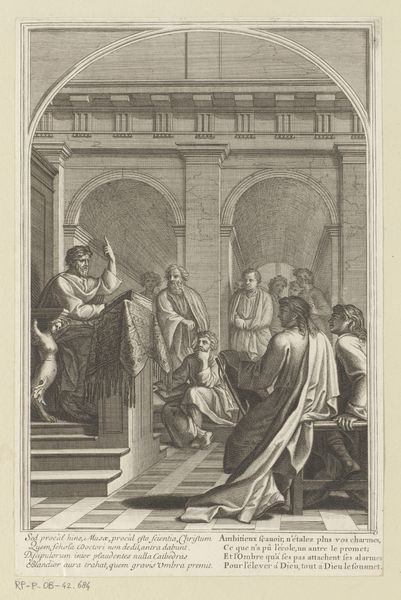
Dimensions: 223 mm (height) x 175 mm (width) (plademaal)
Curator: The atmosphere in this print is undeniably somber. There's a palpable sense of tension in the air, don't you think? Editor: Absolutely. F.C. Lund's engraving, made in 1861, depicts the imprisonment of Queen Caroline Mathilde, a historical moment ripe with political intrigue and personal tragedy. Considering the sociopolitical implications of her forced exile, and particularly her gender within these power dynamics, I would describe it as nothing less than chilling. Curator: Let's explore that. Lund positions her within this grand, imposing architectural setting. Notice how the columns dwarf her, emphasizing her powerlessness at this pivotal moment of state-sponsored capture and confinement. Editor: Yes, the imposing baroque structure creates an immediate power dynamic—a visual manifestation of the institutional forces at play. It underscores how social institutions and historical forces were conspiring to oppress female autonomy. It’s quite telling how her clothing even reads as a constraint to movement, while all the men remain uniformed. Curator: I find it fascinating how Lund chooses to portray this scene. It's not a grand, dramatic outburst but a moment of quiet, almost resigned defeat. Observe her face and tell me your initial feelings. Editor: I perceive a complex layering of defiance, certainly resignation, yet she also seems utterly devastated! Her hand gestures alone convey how aware she is of her lack of sovereignty within patriarchal structures. Also, do you notice the subtle glances from the figures at the margins? They’re seemingly frozen, and rendered nearly mute as bystanders, bearing witness to how historical narratives are forged from silence. Curator: A stark commentary on complicity. As an engraving, it’s a remarkably effective visual narrative, simplifying the context down to a captured expression within a dramatic arrangement. One can see how a royal figure such as this faced scrutiny, and even imprisonment. How can we speak of the social impact from viewing art such as this today? Editor: In revisiting the past, particularly the persecution of figures like Caroline Mathilde, we must consider these events as connected to the social inequalities facing us today, and think critically about institutional structures that continue to affect issues of gender, agency and authority in broader terms. Curator: That is the core of it; even through visual depictions of the past, art gives the public the ability to dissect, connect and even heal together. Editor: Beautifully stated. And perhaps this artwork can become a catalyst, empowering conversations surrounding freedom, identity and intersectional dialogues on justice, as well.
Comments
No comments
Be the first to comment and join the conversation on the ultimate creative platform.
